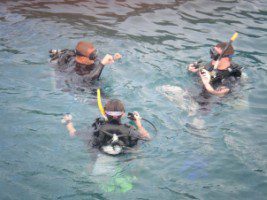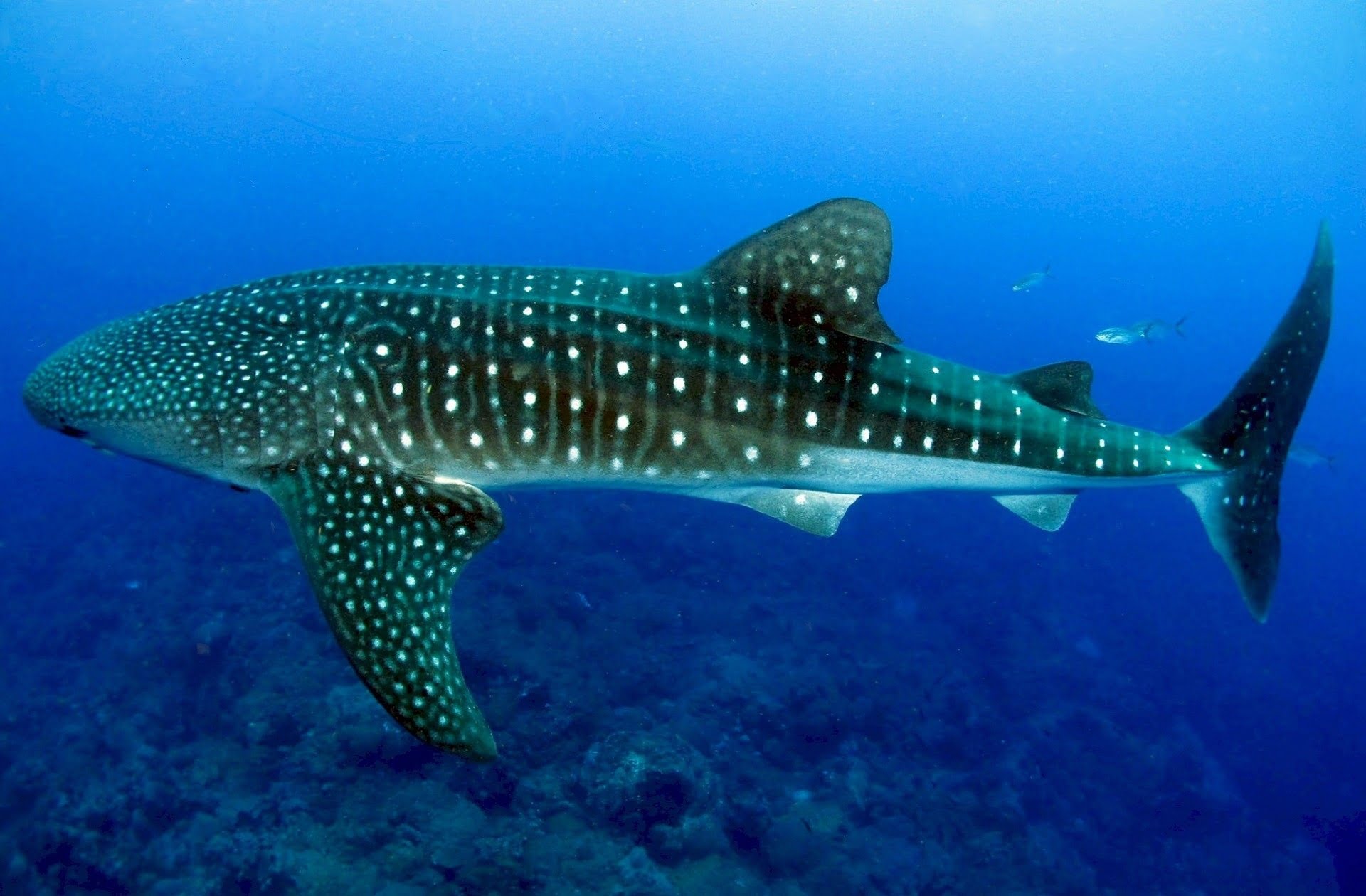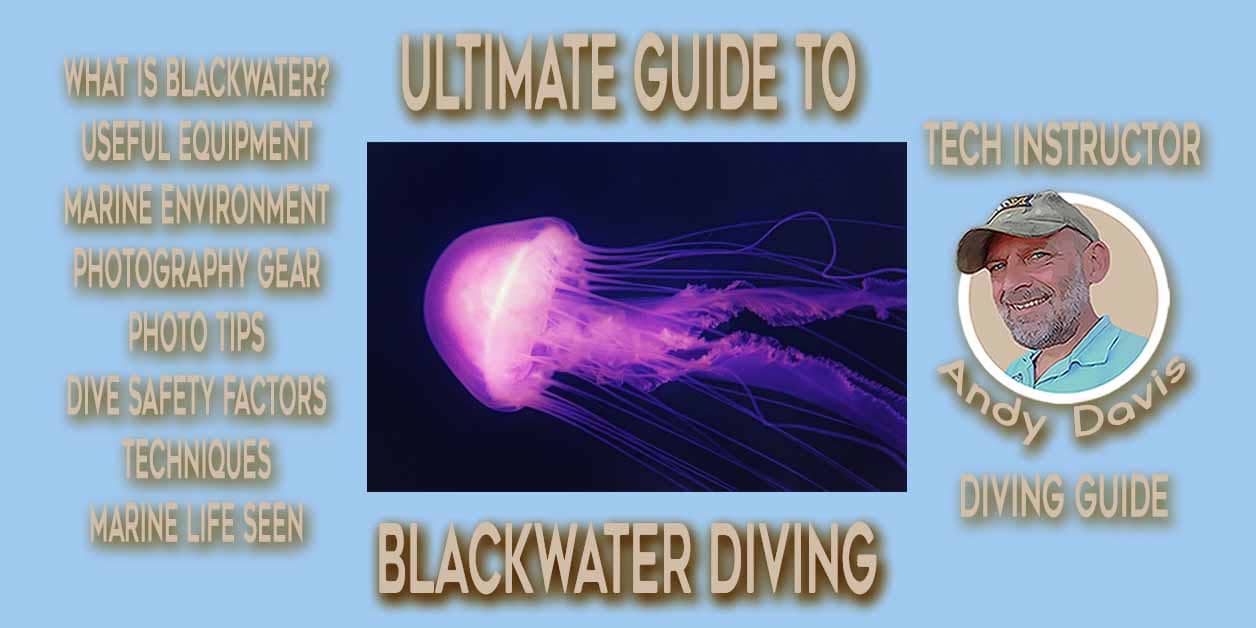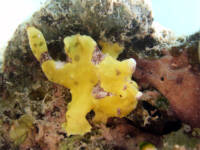Tropical And Cold Water Diving: What’s The Difference?
As an experienced diving instructor, I know firsthand the importance of choosing the right diving environment for a safe and enjoyable diving experience. Knowing the differences between tropical and cold water diving is a big step towards becoming a more proficient and knowledgeable scuba diver!
There are three main types of diving environments, each with its unique characteristics, challenges, and rewards:
- Tropical diving refers to diving in warm waters with temperatures ranging from 75°F to 85°F (24°C to 29°C). These environments typically offer excellent visibility, diverse marine life, and beautiful coral reefs.
- Temperate diving refers to diving in waters with temperatures ranging from 50°F to 75°F (10°C to 24°C). These environments offer a mix of both tropical and cold water diving experiences.
- Cold water diving refers to diving in water temperatures below 50°F (10°C). These environments often offer unique diving experiences, including ice diving, wrecks, and kelp forests, but require specialized equipment and training.
Understanding the differences between these environments and selecting the right one for your skill level and interests is key to becoming a confident and successful diver.
In this article, I will explore the differences between tropical and cold water diving, from water temperature and marine life to equipment and safety considerations, as well as provide tips and insights to help you plan your next dive adventure.
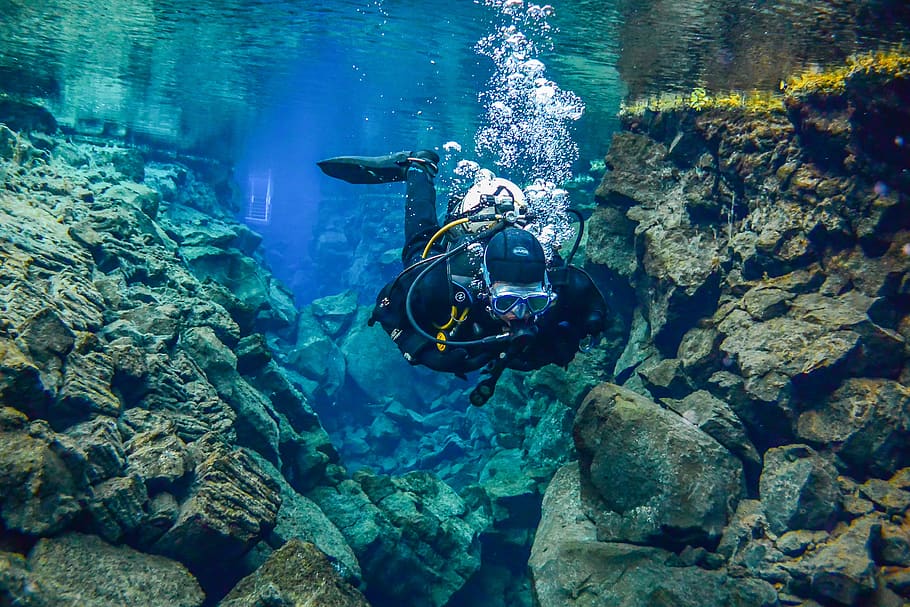
Water temperature and exposure protection
Tropical and cold water diving environments require different types of exposure protection due to the significant differences in water temperature.
Wearing the right exposure protection is crucial to regulate body temperature and protect from the elements.
Different types of wetsuits and dry suits
There are several types of exposure protection available, including full wetsuits, shorty wetsuits, semi-dry wetsuits, and dry suits. Full wetsuits cover the entire body and provide good insulation in warm water, while dry suits provide better insulation and protection in cold water.
Skin suit
A skin suit is the lightest and thinnest form of exposure protection, providing minimal insulation while protecting the skin from the sun and marine life. It is made of Lycra, a stretchy and breathable synthetic material that dries quickly.
Shorty wetsuit
A shorty wetsuit is a wetsuit that covers the torso and thighs but has short sleeves and legs. It provides moderate insulation and is suitable for water temperatures that are not too cold. Wetsuits are made from neoprene rubber, a synthetic rubber that is resistant to water and provides good insulation.
Full 3mm wetsuit
A full wetsuit with 3mm thickness provides good insulation and protection. It covers the entire body, including the arms and legs, and is made from neoprene material that traps a thin layer of water between the suit and the skin, which the body heats to keep warm.
Full 5mm wetsuit
A full wetsuit with 5mm thickness provides excellent insulation and is suitable for colder water temperatures. It is thicker than a 3mm wetsuit and provides more warmth and protection in colder water. Wetsuits are made from neoprene rubber.
Full 7mm wetsuit
A full wetsuit with 7mm thickness provides maximum insulation and is recommended for cold water diving. It is a one-piece suit that covers the entire body, including the arms and legs, with 7mm thick neoprene material that provides excellent insulation.
Two-piece full 7mm wetsuit (Farmer John style)
A Farmer John wetsuit provides more insulation and is recommended for temperate water diving. It is a two-piece suit that consists of a wetsuit bottom that covers the legs and torso, and a separate top with sleeves. The Farmer John wetsuit offers greater thermal protection due to the overlap of material around the torso.
Semi-dry wetsuit
A wetsuit with seals around the neck, wrists, and ankles to prevent water from entering. While they are not completely waterproof like dry suits, the seals on a semi-dry suit reduce the amount of water that enters the suit, making them suitable for diving in colder water temperatures.
Dry suit
A dry suit is a type of exposure protection that keeps the diver completely dry by sealing the body in a waterproof suit. Divers can vary their undergarments to tailor the insulation to specific water temperatures. Drysuits can be made from different materials:
- Trilaminate dry suits are made of three layers of material and are lightweight and flexible. They are just a shell and require undergarments for insulation.
- Neoprene dry suits are thicker and heavier than trilaminate suits and provide good inherent insulation.
- Crushed neoprene dry suits are similar to neoprene suits but are more flexible. They are a compromise between the benefits of neoprene and trilaminate dry suits.
Drysuits also provide an additional means of buoyancy control, and can be considered a redundancy to the BCD. However, the diver has to decide whether to use their BCD or drysuit as their primary means of buoyancy control.
Wetsuit and dry suit temperature range
| Exposure Protection | Temperature Range |
|---|---|
| Skin Suit | 32°C/90°F and above |
| Shorty Wetsuit | 30°C/86°F and above |
| Full 3mm Wetsuit | 27°C/81°F and above |
| Full 5mm Wetsuit | 22°C/72°F and above |
| Full 7mm Wetsuit | 18-26°C/65-79°F |
| Famer John Wetsuit | 16-25°C/61-77°F |
| Semi-Dry Wetsuit | 12-22°C/54-72°F |
| Drysuit | Below 20°C/68°F and colder |
To choose the right exposure protection, consider the dive conditions, including the water temperature, wind, currents, and your level of activity during the dive.
Choosing your wetsuit or dry suit
Exposure protection should fit snugly to prevent water from entering and reduce heat loss. When trying on exposure protection, ensure they are comfortable and flexible enough to allow for easy movement during the dive.
It’s also essential to take care of your exposure protection to ensure it lasts for many dives. Rinse your exposure protection in fresh water after each dive, avoid direct sunlight, and store it in a cool, dry place.
Proper maintenance will prevent tears, holes, and damage to your exposure protection, ensuring it provides reliable protection on future dives.
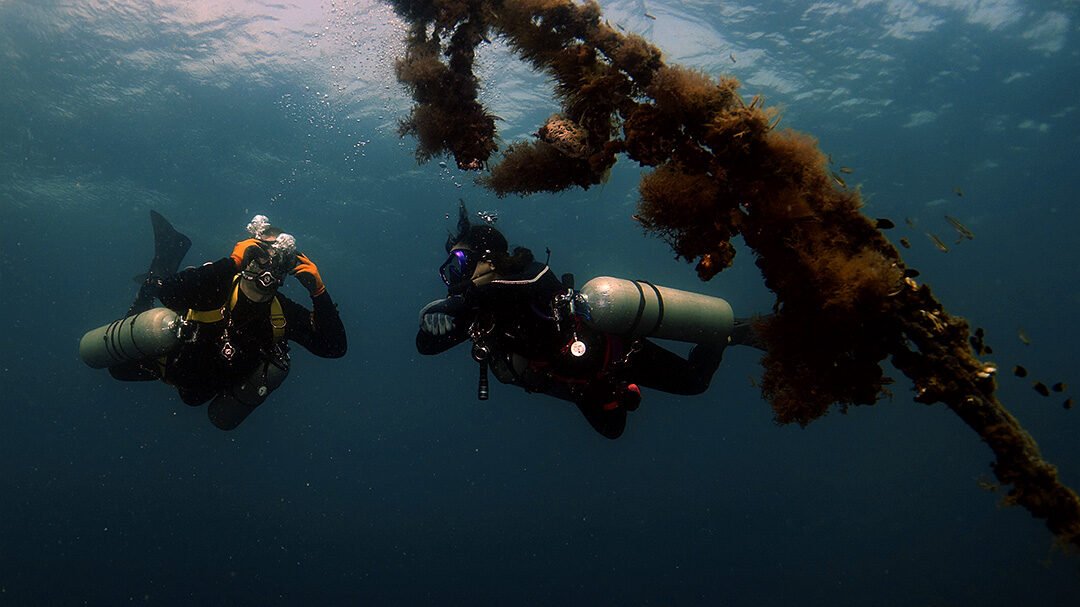
Marine life in tropical and cold water environments
One of the main differences between tropical and cold water marine life is the variety of species that can be found in each environment. While tropical waters are home to a wider variety of marine life, cold water environments often offer unique and unusual species that cannot be found in warmer waters.
Coral reefs are only found in tropical waters, so if you’re interested in diving on a reef, you’ll need to head to a tropical location. Alternatively, Kelp forests are only found in temperate water conditions. These are made up of tall, underwater kelp plants that provide a habitat for a variety of fish and invertebrates.
Tropical water environments
Tropical water environments are home to a diverse range of marine life. Coral reefs are one of the most iconic features of tropical diving and provide a habitat for a wide variety of fish, invertebrates, and other marine creatures. Other examples of marine life that can be found in tropical waters include:
- Sea turtles
- Reef sharks
- Moray eels
- Manta rays
- Cuttlefish
- Coral reef fish
- Ghost pipefish
Cold water environments
Cold water environments are typically less biodiverse than tropical waters. However, they still offer plenty of opportunities to encounter unique marine life. Some of the creatures you may encounter in cold water environments include:
- Seals
- Sea lions
- Otters
- Whales
- Giant Pacific octopus
- Wolf eels
- Conger eels
Marine life hazards in tropical and cold water diving environments
Divers should be aware of potential hazards posed by marine life in different dive environments. Here are some examples:
Tropical water marine life hazards
- Jellyfish: stings can cause pain, itching, and sometimes serious medical complications
- Fire coral: can cause skin irritation and allergic reactions
- Crown-of-thorns starfish: their spines can cause injury and infection
- Stonefish and Scorpionfish: their spines contain venom that can cause pain, swelling, and other symptoms
- Sea snakes: Species of highly venomous snakes live and hunt in tropical oceans
Cold water marine life hazards
- Sea urchins: their spines can cause injury and infection
- Giant kelp: can become tangled and pose a risk to divers
- Conger eel: whilst not aggressive they can bite divers if threatened
- Sharks: while shark attacks on humans are rare, divers should still be cautious and avoid interacting with them.
Visibility in tropical and cold water diving
Good visibility is important for safe and enjoyable diving, but it can vary greatly between different dive environments. Here are some factors that can affect visibility and tips for improving it in different environments.
Differences in visibility between tropical and cold water diving
Tropical waters are generally known for having clearer water and better visibility than cold water environments. This is due to several factors such as:
- Warmer water temperatures: warm water holds less dissolved gas and particles, resulting in less suspended matter in the water.
- Fewer nutrients: tropical waters typically have less nutrients at shallow depths, which means less phytoplankton and algae that can contribute to poor visibility.
- Less wave action: calm waters found in many tropical locations lead to less sediment and particulate matter being stirred up.
On the other hand, cold water environments tend to have more particulate matter in the water, due to factors such as:
- Increased wave action: rougher seas and tidal movements can stir up sediment and other particles, leading to poor visibility.
- Higher nutrient content: cold water is generally richer in nutrients at shallower depths, which can lead to more phytoplankton and algae in the water.
- Rainfall-runoff: there is typically more rain in cold water regions, where rivers and runoff can introduce more sediment into the water.
Importance of good visibility for safe diving
Good visibility is critical for safe diving as it allows divers to see potential hazards, communicate with their dive buddy, and navigate underwater. Poor visibility can make it difficult to spot dangerous marine life, read gauges, or find important landmarks.
Factors that affect visibility in different dive environments
Different dive environments can present their own unique challenges to visibility. Some factors that can affect visibility include:
- Depth: visibility often decreases with depth due to reduced light penetration and increased pressure.
- Water temperature: colder water can lead to more particulate matter in the water, reducing visibility.
- Weather conditions: rough seas and rain can cause sediment to be stirred up, affecting visibility.
- Tidal movements: strong currents and tidal movements can cause sediment to be stirred up and affect visibility.
- Time of day: visibility may be reduced at dawn and dusk when the sun is low in the sky and light penetration is reduced.
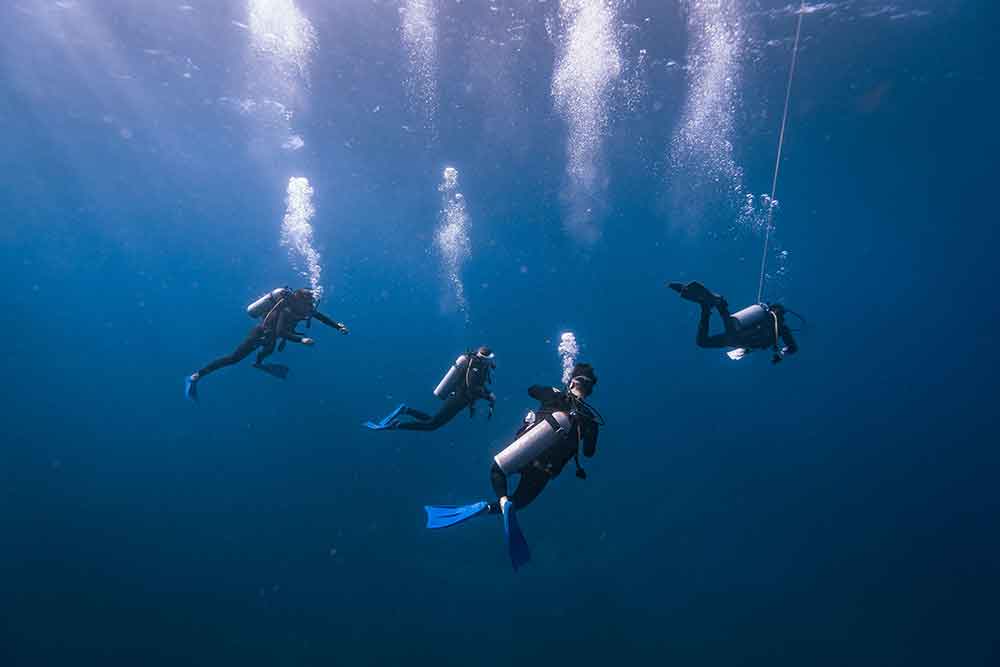
Diving equipment for tropical and cold water diving
Diving in different environments requires different equipment to ensure safety and comfort. In this section, I will discuss the specific equipment needed for both tropical and cold water diving and how they differ.
Diving in tropical and cold water environments requires different equipment for a safe and comfortable experience. Below is an overview of the different types of equipment needed specifically for tropical and cold water diving.
Types of dive gear needed for tropical diving
Tropical diving typically emphasizes lightweight equipment, as divers often travel for vacation and need to pack light. Some examples of equipment used for tropical diving include:
- Travel BCDs
- Open foot fins
- Short wetsuits
- Thin gloves
- No hood needed
Types of dive gear needed for cold water diving
Cold water diving requires specialized equipment due to the extreme temperatures. Examples of equipment needed for cold water diving include:
- Ice-resistant regulators
- Thick wetsuits or drysuits
- Hoods to protect the head and neck from cold water
- Thick gloves to protect the hands from cold water
- Heavier weight systems to offset the buoyancy of thicker wetsuits or drysuits
It is crucial to have the right equipment for the dive environment. Using inappropriate gear can compromise safety and comfort.
Tips for choosing dive gear for tropical and cold water diving environments
When choosing equipment for different dive environments, consider the following tips:
- Research the dive environment to understand the equipment needed
- Consult with experienced divers or dive shops to get advice on appropriate gear
- Regularly maintain and service equipment to ensure it is functioning properly
- Replace worn or damaged equipment as necessary to avoid equipment failure during a dive
By choosing and maintaining the appropriate equipment for the dive environment, divers can enjoy a safe and comfortable diving experience.
Dive Planning and safety in tropical and cold water environments
Dive planning and safety are crucial components of scuba diving. Proper planning and safety measures help to ensure a successful and enjoyable dive. It is important to consider the dive environment and any potential risks associated with diving in that environment.
Risk assessment for tropical and cold water diving
Each diving environment presents different risks, which need to be assessed before planning and executing a dive. The most common risks associated with scuba diving include:
- Water temperature
- Visibility
- Currents
- Marine life
- Equipment failure
- Decompression sickness
Dive planning and safety factors for tropical diving
Tropical diving environments often present less risk than cold water environments. However, it is still important to take certain factors into consideration when planning a dive.
- Water temperature: While water temperatures are typically warm in tropical diving environments, it is still important to consider the appropriate exposure protection to ensure comfort and safety.
- Marine life: Tropical diving environments are often home to a wide variety of marine life. It is important to be aware of potential hazards such as poisonous or venomous creatures and to understand how to avoid them.
- Currents: Many tropical diving environments have strong currents, which can be dangerous if not properly managed. It is important to understand how to navigate and dive in strong currents.
- No-stop limits: Staying warm and comfortable throughout a dive can increase risk of exceeding no-stop limits (NDL). Plan the depth and time of dives.
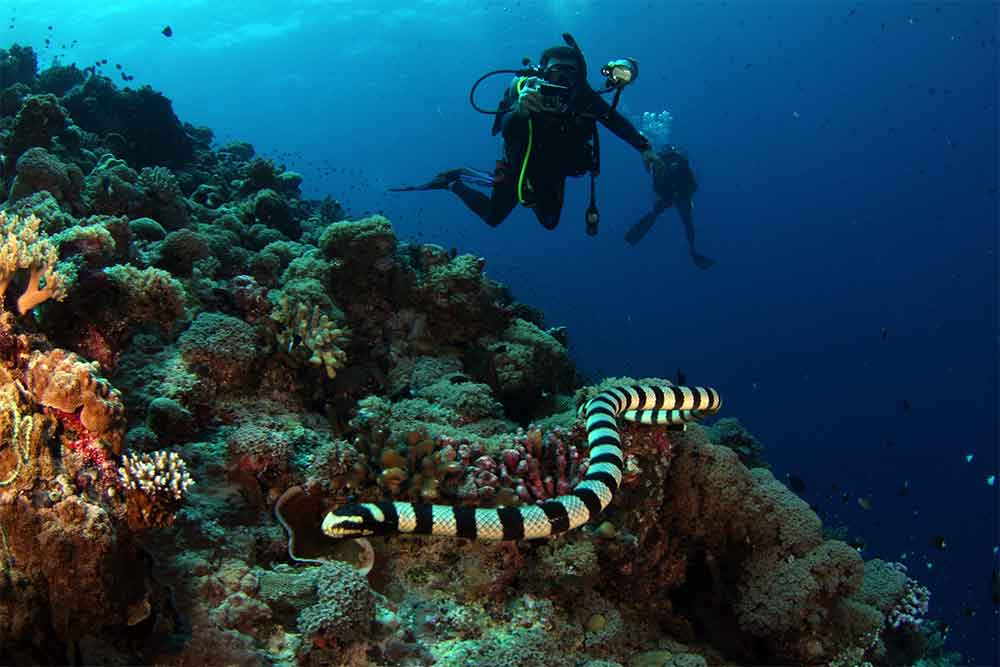
Dive planning and safety factors for cold water diving
Cold water diving environments present a higher risk than tropical diving environments. It is important to take additional factors into consideration when planning a dive in cold water.
- Water temperature: Cold water diving requires thicker exposure protection to ensure warmth and safety. It is important to consider the appropriate thickness of wetsuits, drysuits, gloves, and hoods.
- Equipment failure: Cold water diving often requires additional equipment, such as ice-resistant regulators and dive lights. It is important to ensure that all equipment is in good working order and properly maintained.
- Marine life: Cold water diving environments may have different marine life than tropical diving environments. Divers should be aware of potential hazards and how to avoid them.
Tips for planning and executing safe dives in tropical and cold water diving environments
- Conduct a thorough dive site briefing before each dive.
- Consider environmental factors such as water temperature, visibility, and currents.
- Ensure that all equipment is in good working order and properly maintained.
- Use appropriate exposure protection for the dive environment.
- Be aware of potential hazards and understand how to avoid them.
- Always dive with a buddy and establish a pre-dive plan.
- Plan for emergency situations and understand the appropriate emergency procedures.
Tropical and cold water diving destinations
When it comes to planning a dive trip, one of the most exciting parts is deciding where to go. There are countless dive destinations all over the world, each with its own unique features and attractions. In this section, we’ll take a look at some of the most popular dive destinations for both tropical and cold water diving.
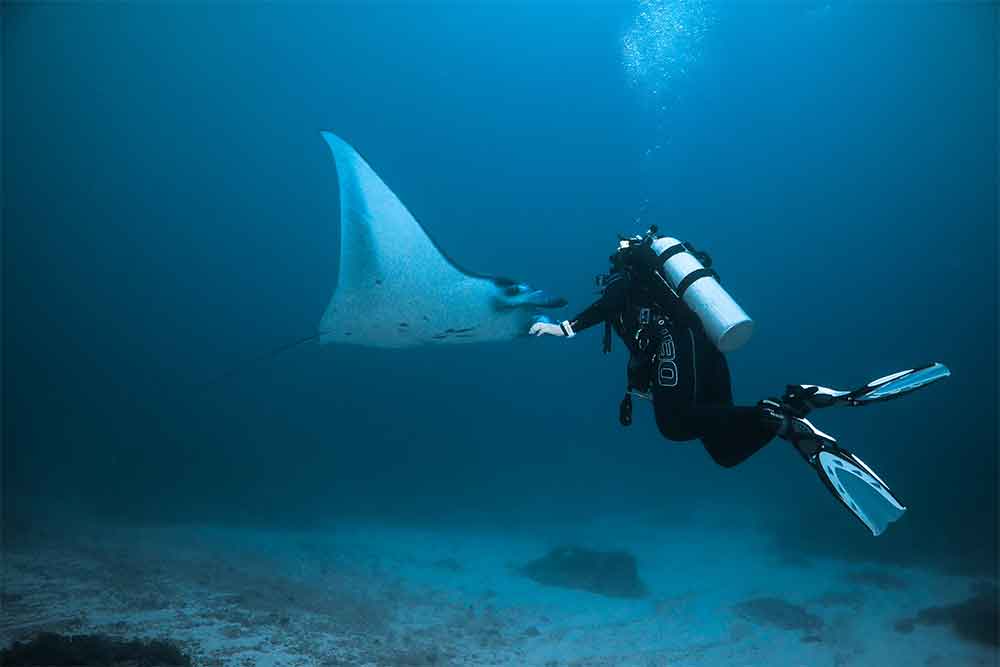
Popular tropical diving destinations
Some of the most popular dive destinations for tropical diving include:
- The Caribbean: This region offers some of the most diverse and colorful underwater landscapes, with plenty of opportunities for both beginner and advanced divers.
- Southeast Asia: Countries like Thailand, Indonesia, and the Philippines are known for their warm waters, stunning coral reefs, and abundance of marine life.
- The Great Barrier Reef: Located off the coast of Australia, this world-renowned dive spot boasts over 2,900 individual reefs and a plethora of species, including whales, dolphins, and sharks.
- Mexico: Mexico offers an abundance of marine life, from colorful coral reefs to whale sharks. Cozumel and Cancun are popular dive destinations, but there are also less crowded spots like Puerto Vallarta and La Paz.
- Belize: Known for its beautiful coral reefs and abundant marine life, Belize is a great destination for diving. The Blue Hole is a must-see for experienced divers, and there are plenty of other sites for divers of all levels.
Popular cold water diving destinations
- Silfra Fissure in Iceland: You can dive between two continents and explore crystal-clear waters with incredible visibility
- The Channel Islands in California: Abundant kelp forests and diverse marine life
- Scapa Flow in Scotland: A popular wreck diving destination with many World War I and II shipwrecks
- British Columbia, Canada: You can spot a variety of marine animals including orcas, sea lions, and seals.
- New Zealand: Stunning with sub-tropical North Island, dramatic Milford Sound, picturesque Dunedin, exquisite diving near Poor Knights Islands. Search for sea dragons, swim with trevally, and see orcas.
- South Africa: Offers cage diving with great white sharks, world-famous sardine run, and diving in two different oceans. A must-visit destination for adventure-seeking divers with diverse scuba diving options.
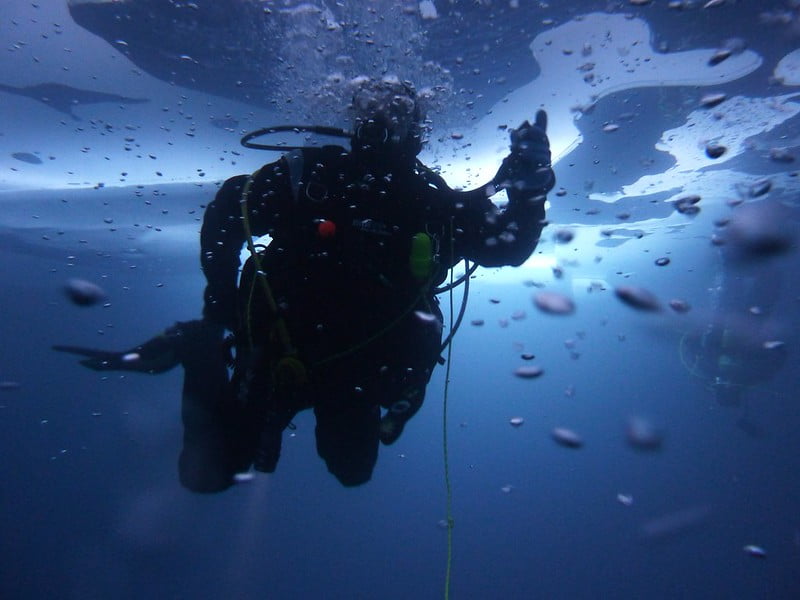
Importance of choosing the right water conditions for your experience level and interests
Choosing the right dive destination is crucial for ensuring a safe and enjoyable trip. Some things to consider include:
- Your diving experience level: If you’re a beginner, you may want to choose a location with calm, shallow waters and easy dive sites. On the other hand, advanced divers may prefer more challenging dive sites with stronger currents or deeper depths.
- Your diving interests: Are you interested in seeing specific species of marine life, or exploring unique geological features? Different dive destinations offer different opportunities, so it’s important to choose a location that aligns with your interests.
Tips for planning a dive trip to different dive destinations
When planning a dive trip, here are a few tips to keep in mind:
- Research your destination: Learn about the local dive shops, dive sites, and any regulations or restrictions that may be in place.
- Check the weather and water conditions: Make sure you’re traveling during a season with favorable weather and water conditions for diving.
- Pack accordingly: Different dive destinations may require different types of equipment or clothing, so be sure to pack appropriately for the location and season.
- Book in advance: Popular dive destinations may have limited availability for dive shops or accommodations, so it’s best to book well in advance to ensure you get your preferred dates and times.
Enjoy tropical and cold water diving
In conclusion, understanding the differences between tropical and cold water diving is essential for safe and enjoyable diving. Knowing the importance of water temperature, marine life, visibility, equipment, dive planning, safety, and dive destinations can make all the difference in your diving experiences. To summarize the main points, here is a list of the key takeaways:
- Water temperature plays a significant role in choosing the right wetsuit for the dive.
- Marine life varies greatly between tropical and cold water diving, and it’s essential to understand the differences.
- Good visibility is crucial for safe diving, and factors affecting visibility can vary between different dive environments.
- Different types of equipment are needed for tropical and cold water diving, and having the right gear is essential for a safe and enjoyable dive.
- Dive planning and safety protocols differ between tropical and cold water diving, and it’s crucial to plan and execute safe dives in any environment.
- Popular dive destinations offer different experiences between tropical and cold water diving, and it’s essential to choose the right destination for your skill level and interests.
I encourage divers to try diving in different environments to expand their skills and diving experience.
About The Author

Andy Davis is a RAID, PADI TecRec, ANDI, BSAC, and SSI-qualified independent technical diving instructor who specializes in teaching sidemount, trimix, and advanced wreck diving courses.
Currently residing in Subic Bay, Philippines; he has amassed more than 10,000 open-circuit and CCR dives over three decades of challenging diving across the globe.
Andy has published numerous diving magazine articles and designed advanced certification courses for several dive training agencies, He regularly tests and reviews new dive gear for scuba equipment manufacturers. Andy is currently writing a series of advanced diving books and creating a range of tech diving clothing and accessories.
Prior to becoming a professional technical diving educator in 2006, Andy was a commissioned officer in the Royal Air Force and has served in Iraq, Afghanistan, Belize, and Cyprus.
In 2023, Andy was named in the “Who’s Who of Sidemount” list by GUE InDepth Magazine.
Purchase my exclusive diving ebooks!
Originally posted 2023-04-15 18:52:55.









